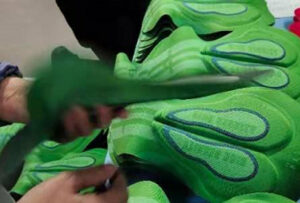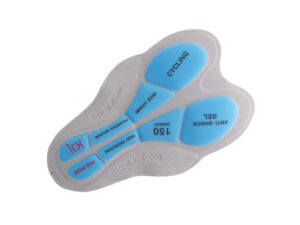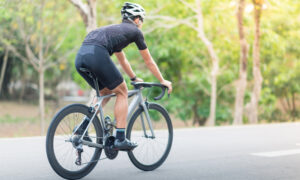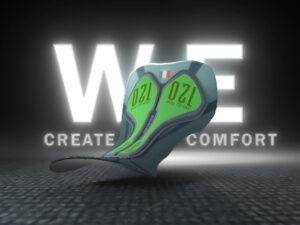A cycling pad, also known as “chamois” or “bikepad” or “Fondello” (Italian), “Gamuza” or “Badana” (Spanish), Peau (French) is a protective insert that is applied in cycling shorts with the main purpose[1] of protecting the groin from the friction of constant and prolonged saddle contact. Cycling pads were developed at the beginning of the 1900s and were exclusively made of deer leather up until the 1980s, when technical fabrics were introduced, and allowed for enhanced performance.
The first high-tech thermo molded cycling pads date back to the early 1990s; gel inserts also make their first appearance and are used in addition to polyurethane foams for extra comfort.
It is only in the year 2000 that the chamois is produced with an elastic technology, which allows the pad to move with the cyclist’s body. This technology acts as an elastic interface between the cyclist’s body and the saddle, and it is these very few square inches that are vertically subject to body weight and pressure. For this reason it is essential for a cycling pad to be capable of protecting the body from the compression the body exerts in contact with the saddle and from chafing in the inner leg area, that is due to the thousands of pedal strokes and revolutions that a cyclist carries out during a normal workout.
The cycling pad is the most important component of the entire cycling short. Its functions are to:
· Protect the cyclist’s body, whose weight exerts vertical pressure on the saddle, supplying maximum protection, particularly at a perineal and ischiatic level, beyond delivering the highest level of comfort possible. The athlete can then focus and concentrate on his pedal stroke instead of coping with discomfort and annoying pains that can arise due to continuous compression on a limited surface such as a bicycle saddle.
· Supply protection so as to avoid chafing due to pedal strokes. An athlete can easily count an average of 100 pedal strokes per minute, totaling 18,000 revolutions in three hours.





